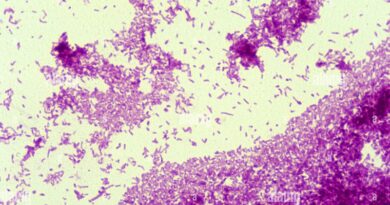Hodgkin Lymphoma
In the field of oncology, Hodgkin lymphoma stands as a serious life-threatening health condition. This unique form of cancer, named after the British physician Thomas Hodgkin who first described it in 1832, continues to puzzle researchers and captivate the medical community. In this article, we will discuss this malignant disease, and its intricacies, explore treatment options, and shed light on the experiences of those affected by this enigmatic malignant disease.
What is Hodgkin Lymphoma?
Also known as Hodgkin’s disease, it is a type of cancer that originates in the lymphatic system. This system has important functions including immune response, filtering toxins, infections, and waste products. This disease is due to an abnormal growth of cells that occurs within the lymphatic system.
Signs and Symptoms
It often presents itself through various signs and symptoms, which may include:
- Enlarged lymph nodes: Painless swelling of lymph nodes in the neck, armpits, or groin.
- Persistent fatigue: Unexplained tiredness and lack of energy.
- Night sweats: Profuse sweating during sleep, drenching bedclothes.
- Unexplained weight loss: Significant and unintended weight loss.
- Itchy skin: Pruritus (itchiness) without any apparent cause.
- Fever and chills: Recurrent high temperature and accompanying chills.
Diagnosis
For diagnosis, doctors employ a combination of medical history evaluations, physical examinations, imaging tests (such as CT or PET scans), and a lymph node biopsy. The presence of specific cells known as Reed-Sternberg cells is a hallmark feature in the diagnosis of Hodgkin lymphoma.
Subtypes of Hodgkin Lymphoma (HL)
It can be classified into two main categories: classical Hodgkin lymphoma (cHL) and nodular lymphocyte-predominant Hodgkin lymphoma (NLPHL). The classical subtype further comprises four subtypes:
- Nodular sclerosis subtype (NSHL):
The most common form often affects young adults. - Mixed cellularity (MCHL):
Common in older adults and often associated with certain infections. - Lymphocyte-rich subtype (LRHL):
A rare subtype with a better prognosis. - Lymphocyte-depleted subtype (LDHL):
The rarest and most aggressive subtype.
| Subtype | Description |
|---|---|
| Classic Hodgkin Lymphoma | It is the most common type and includes four subtypes: |
| – Nodular Sclerosis: The most common – young adults | |
| – Mixed Cellularity: older adults – associated with certain infections | |
| – Lymphocyte-Rich: A rare subtype – a better prognosis | |
| – Lymphocyte-Depleted: The rarest – the most aggressive subtype | |
| Nodular Lymphocyte-Predominant Hodgkin Lymphoma | It is a rare subtype, characterized by the presence of popcorn cells. |
Treatment Options and Prognosis
Advancements in medical research have significantly improved the prognosis for individuals diagnosed with Hodgkin lymphoma. Treatment options typically depend on the stage of the disease, the patient’s age and overall health, and other individual factors. The common treatment modalities include:
- Chemotherapy: The use of powerful drugs to destroy cancer cells.
- Radiation therapy: High-energy beams used to target and kill cancer cells.
- Immunotherapy: Utilizing the body’s immune system to recognize and destroy cancer cells.
- Stem cell transplant: Replacing diseased bone marrow with healthy stem cells.
The prognosis has greatly improved over the years, with high cure rates even in advanced stages. Regular follow-up care and long-term monitoring are essential to detect any potential recurrence and manage any treatment-related side effects.
Living with Hodgkin Lymphoma
Living with Hodgkin lymphoma can be an emotionally and physically challenging journey for patients and their loved ones. The support of family, friends, and healthcare professionals is vital throughout the treatment process. Joining support groups, seeking counseling, and adopting a healthy lifestyle can help individuals navigate the complexities of living with the disease and enhance their overall well-being.
SUMMARY
Hodgkin lymphoma remains an intriguing and multifaceted disease that continues to capture the attention of researchers worldwide. Increased awareness, improved diagnostic techniques, and innovative treatment options have revolutionized the management of this malignancy, providing hope for those affected. With ongoing research and advancements, the future looks promising in the fight against this enigmatic cancer. Together, let us continue to unravel the mysteries surrounding Hodgkin lymphoma and work towards a world free from its grip.


